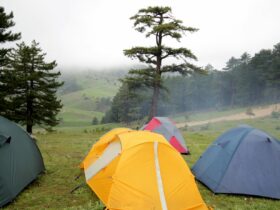In today’s era greatly dependent on GPS (Global Positioning System) for navigation, mastering the skill of finding your way sans its assistance has become an art form. The significance of comprehending alternative navigation methods cannot be overstated, particularly in scenarios where GPS signals may falter or become inaccessible. Let’s embark on a journey beyond the realm of GPS and venture into a realm that encompasses a diverse array of traditional and contemporary techniques for navigation. Understanding these methods not only broadens our navigational expertise but also equips us to navigate confidently in situations where reliance solely on GPS is not feasible or reliable.
Traditional Navigation Methods
Navigating without GPS often involves relying on traditional tools like maps, compasses, and natural indicators. Here are various methods to find your way without GPS:

Orienting with a Map and Compass:
A dependable method involves using a map and compass. Follow these steps:
- Locate North: Use the compass to identify magnetic north.
- Align Your Map: Match the map’s north direction with the compass’s magnetic north.
- Set Your Heading: Sync the map and compass to determine your direction and follow the map’s features to your destination.
Dead Reckoning for Tracking Progress:
Estimate your current position by tracking distance and direction from a known starting point. Steps include:
- Establish a Starting Point: Mark your starting location on the map.
- Record Movements: Track distance and direction taken.
- Calculate Your Position: Estimate your current position based on distance and direction traveled.
- Make Corrections: Periodically compare estimated position with actual surroundings and adjust as needed.
Using Natural Signposts:
Nature provides cues for navigation. Here are some methods:
- Solar Navigation: Sun’s movement helps determine direction and time.
- Stellar Navigation: Use stars, like the North Star (Polaris), as reference points for navigation, particularly in the night sky.
- Shadow Sticks: Insert a stick vertically, mark the tip of its shadow, wait, mark the new position, and connect the points for east-west orientation. This technique aids in determining time and direction.
These traditional methods, involving maps, compasses, celestial bodies, and natural signs, offer reliable means to navigate and find direction when GPS isn’t available or reliable. Mastering these techniques ensures competence in various terrains and situations.
Map Reading Skills

Topographic Maps:
Learning to interpret topographic maps is crucial. These detailed maps showcase terrain features, elevations, water bodies, and vegetation. Reading contour lines helps assess landscape characteristics and plan routes effectively.
Dead Reckoning:
Dead reckoning involves tracking one’s location by estimating speed, direction, and time traveled from a known starting point. It relies on maintaining a constant awareness of movements using landmarks or natural features.
Modern Techniques
Smartphone Navigation Apps:
While GPS-based apps dominate, offline maps and compass apps can function without internet or GPS signals. They rely on a phone’s built-in sensors, aiding navigation in remote areas or during signal outages.
Satellite Communicators:
Devices like satellite messengers or beacons use satellite networks to transmit distress signals or location information in emergencies. They serve as an added safety net when traditional navigation fails.
Skill Development and Practical Considerations
Practice Navigation Skills:
Sharpening navigation abilities requires practice. Engage in orienteering events, hiking trails without relying on GPS, or participate in courses teaching traditional navigation techniques.
Redundancy in Navigation:
Relying solely on one method can be risky. Implement redundancy by carrying multiple tools like maps, compasses, and GPS devices, ensuring adaptability to different scenarios.
Conclusion
Understanding navigation techniques beyond GPS empowers individuals to explore confidently, even in GPS-challenged environments. Integrating traditional methods with modern technology offers a well-rounded approach to navigation. However, while these methods are effective, it’s crucial to practice and develop these skills beforehand to navigate seamlessly in any situation.
Embracing the world beyond GPS isn’t just about survival but also about enjoying the journey with a deeper connection to the environment. As you delve into learning these techniques, you’ll gain a newfound appreciation for the art and science of navigation.






Leave a Reply